Electronic ticket for entry and exit to the Dominican Republic 2024 Now you can record your entry and exit data digitally It …
Discovering the Delicious Flavors of Dominican Republic Foods
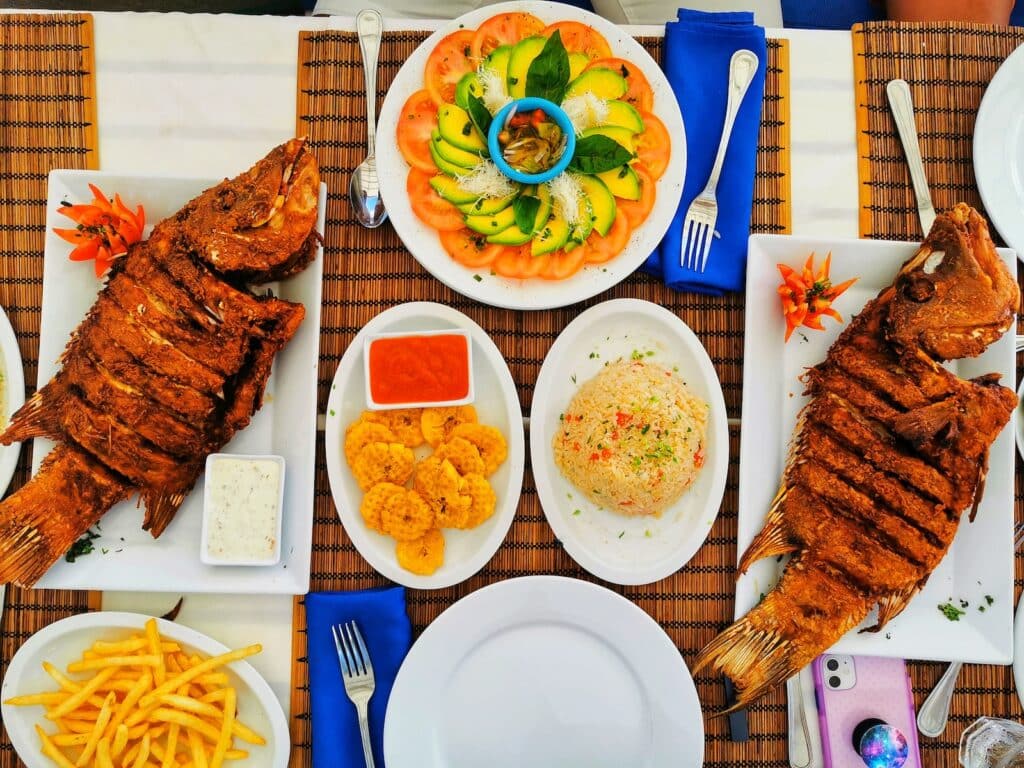
The Dominican Republic is a country known for its vibrant culture, beautiful beaches, and delicious foods. The cuisine of the Dominican Republic is a fusion of indigenous, African, and Spanish flavors, creating a unique blend of tastes and aromas. In this blog post, we’ll take a closer look at some of the most popular Dominican Republic foods and where you can find them.
The Dominican Republic is famous for its rich and diverse cuisine, which blends influences from Spain, Africa, and the native Taino people. Here are some of the most typical dishes to try when visiting the country:
1- Exploring the Traditional Dish of the Dominican Republic - Bandera Dominicana
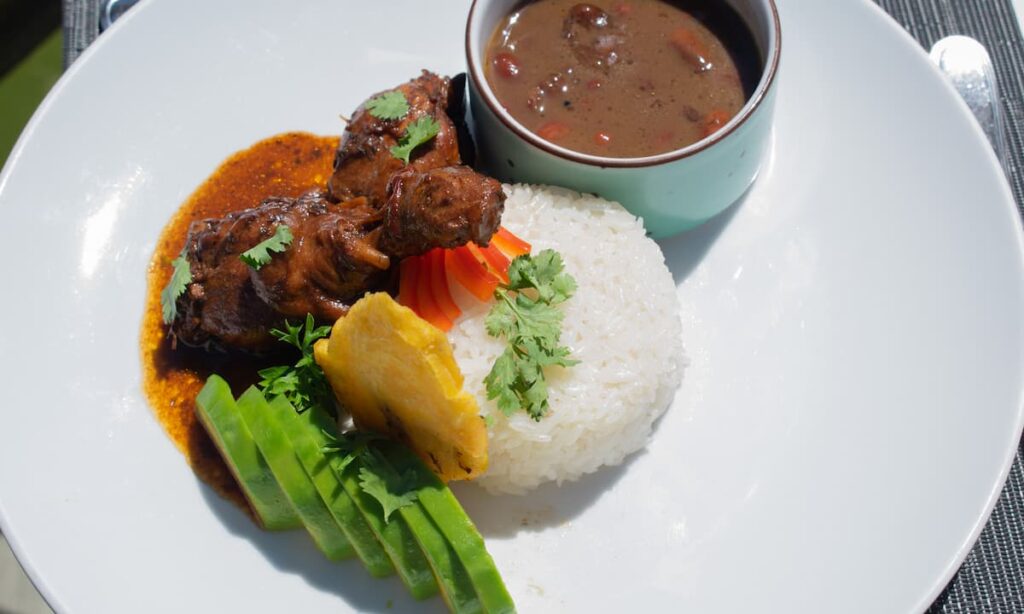
The Dominican Republic is a country rich in culture and traditions, and one of the best ways to experience it is through its food. One of the most popular and representative dishes of the Dominican cuisine is Bandera Dominicana, a colorful and flavorful dish that has become a symbol of the country’s culinary heritage.
Bandera Dominicana, which means Dominican flag, is a combination of rice, beans, and meat, usually chicken or beef. The dish gets its name from the colors of the Dominican flag, with the white rice representing purity, the red beans representing the blood of the people, and the green salad representing the lush greenery of the country.
History of Bandera Dominicana
The origins of Bandera Dominicana can be traced back to the early years of the Dominican Republic, when the country was under the rule of the Spanish Empire. The dish was created as a way to feed the soldiers and workers who were building the country’s infrastructure, such as roads and buildings.
Over time, Bandera Dominicana became a popular dish among the general population, and it was eventually adopted as a symbol of the country’s national identity. Today, it is served in homes, restaurants, and street food stalls throughout the Dominican Republic, and it is a staple at many cultural events and celebrations.
Ingredients and Preparation
To make Bandera Dominicana, you will need the following ingredients:
- Rice
- Red kidney beans
- Meat (chicken or beef)
- Onions
- Garlic
- Red peppers
- Tomatoes
- Cilantro
- Salt
- Oil
The preparation of Bandera Dominicana involves cooking the rice and beans separately, then seasoning and cooking the meat with the onions, garlic, and peppers. The rice and beans are then combined and served alongside the meat and a fresh salad made with chopped tomatoes, cilantro, and red onions.
Best Places to Try Bandera Dominicana
If you’re looking to experience the flavors of the Dominican Republic, there are plenty of places to try Bandera Dominicana. Here are some of the best places to taste this delicious dish:
El Conuco – This restaurant in Santo Domingo is known for its traditional Dominican cuisine, including Bandera Dominicana.
La Casona – Located in Santiago, this restaurant serves up some of the best Bandera Dominicana in the country.
Street Food Stalls – If you’re looking for an authentic culinary experience, try one of the many street food stalls throughout the country that serve Bandera Dominicana.
In Conclusion
Bandera Dominicana is a delicious and colorful dish that represents the history and culture of the Dominican Republic. With its blend of rice, beans, and meat, it’s a hearty and satisfying meal that is sure to please any food lover. So, if you’re ever in the Dominican Republic, be sure to try Bandera Dominicana and experience the flavors of this beautiful country.
2- Exploring the Delicious World of Mangú - The National Dish of the Dominican Republic
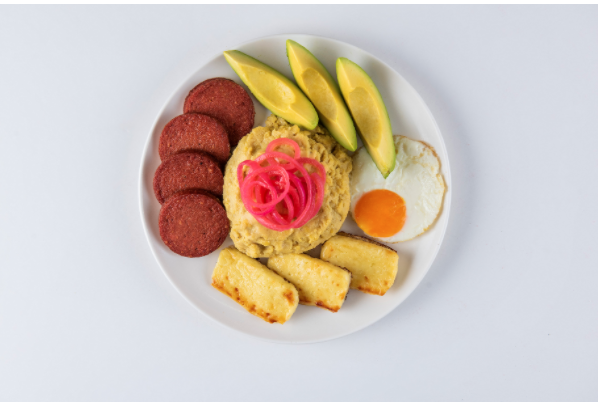
Mangú is one of the most beloved and iconic dishes of the Dominican Republic. This traditional dish is made with mashed green plantains, accompanied by a variety of sides such as fried cheese, salami, and eggs. In this article, we’ll explore the origins of Mangú, how it’s made, and some variations of the dish you can try.
Origins of Mangú:
Mangú is believed to have originated from the Taino people, who were the indigenous inhabitants of the Dominican Republic before the arrival of the Spanish. The Taino people were skilled at cultivating and cooking with plantains, which were a staple in their diet. When the Spanish arrived, they introduced new ingredients and cooking techniques, which eventually led to the creation of the Mangú we know today.
How Mangú is Made:
To make Mangú, green plantains are boiled until they are soft, then mashed together with butter or oil until they are smooth and fluffy. The mashed plantains are then typically served with a variety of sides, including fried cheese, eggs, and salami. Some variations of the dish may include additional toppings such as avocado or sautéed onions.
Variations of Mangú:
While the traditional recipe for Mangú is made with mashed green plantains, there are many variations of the dish that incorporate other ingredients. Some people may use ripe plantains instead of green, which gives the dish a sweeter flavor. Other variations may include adding bacon or chorizo to the dish for added flavor, or substituting the traditional sides for different meats or vegetables.
In conclusion, Mangú is a delicious and iconic dish of the Dominican Republic, loved by both locals and visitors alike. Whether you’re looking to try the traditional recipe or a variation of the dish, there are plenty of options to explore. So next time you visit the Dominican Republic, be sure to give Mangú a try and experience the unique flavors and history of this beloved dish.
3- Exploring the Delicious World of Sancocho, the National Dish of the Dominican Republic
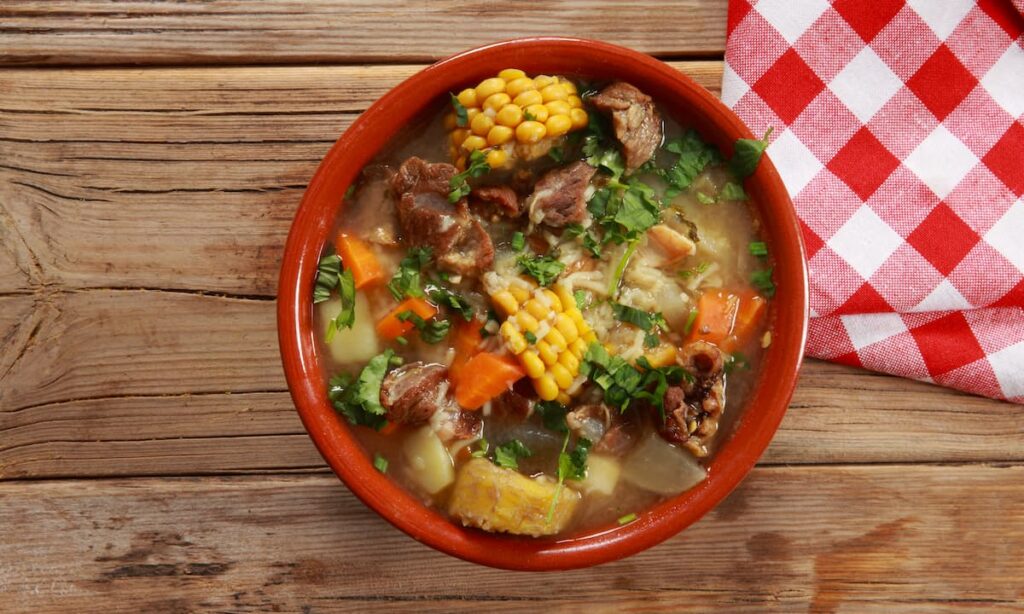
Sancocho is a hearty and flavorful stew that is considered the national dish of the Dominican Republic. This delicious soup has a rich history and is a staple in Dominican cuisine. In this article, we will explore the origins of sancocho, its ingredients, and how it’s traditionally prepared. We’ll also share some tips for making your own delicious sancocho at home.
Origins of Sancocho
Sancocho has roots in the pre-Columbian era and is a fusion of African, Taino, and Spanish culinary influences. It’s a dish that has been passed down through generations and has become an important part of Dominican culture.
Ingredients of Sancocho
Sancocho is a hearty stew that is made with various meats such as chicken, beef, pork, or goat. The broth is thickened with plantains, yucca, and corn, and is flavored with a blend of herbs and spices. Other ingredients such as carrots, celery, onions, and peppers are added to enhance the flavor of the soup.
Preparing Sancocho
The preparation of sancocho is a time-consuming process, but the result is a rich and flavorful stew that is worth the effort. The meats are first boiled in water with herbs and spices until tender, then the vegetables are added to the broth. The plantains, yucca, and corn are cooked separately and then mashed to thicken the soup. The stew is then simmered until all the flavors have melded together.
Serving Sancocho
Sancocho is traditionally served with white rice and avocado. It’s a perfect dish for gatherings with friends and family, as it can be made in large quantities and is sure to please everyone’s taste buds.
Making Sancocho at Home
If you want to try making sancocho at home, there are many recipes available online that you can follow. It’s important to note that the recipe can vary from region to region and from family to family, so don’t be afraid to experiment with different ingredients and spices to find the perfect blend for your taste.
Conclusion
Sancocho is a beloved dish in the Dominican Republic and is a must-try for anyone visiting the country. Its rich history, complex flavors, and hearty nature make it a perfect representation of Dominican cuisine. Whether you’re enjoying it at a local restaurant or making it at home, sancocho is sure to delight your taste buds and leave you feeling satisfied.
4- Delicious and Flavorful: The Ultimate Guide to Pollo Guisado from the Dominican Republic
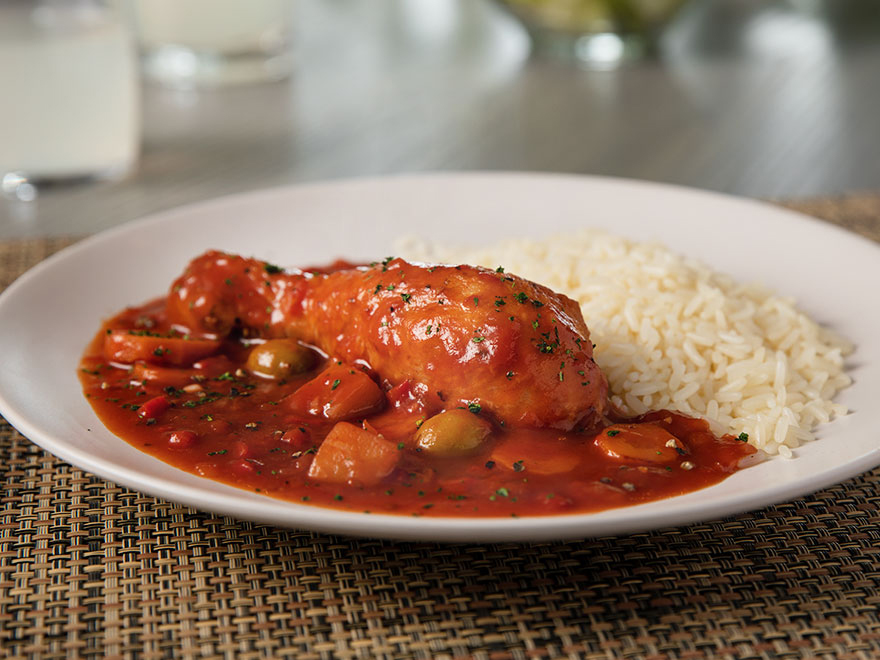
If you’re looking for a flavorful and hearty dish from the Dominican Republic, look no further than Pollo Guisado. This traditional dish, also known as stewed chicken, is a staple in Dominican cuisine and is enjoyed by locals and visitors alike.
Pollo Guisado is typically made with chicken pieces that are marinated in a mixture of garlic, oregano, vinegar, and other spices. The chicken is then sautéed with onions, peppers, and tomatoes, and simmered in a flavorful broth until it’s tender and falling off the bone.
This dish is usually served with rice and beans, or with tostones (fried plantains) on the side. It’s also a popular filling for empanadas, a type of turnover that’s popular in the Dominican Republic and other Latin American countries.
If you’re visiting the Dominican Republic, be sure to try Pollo Guisado at a local restaurant or make it yourself at home. It’s a delicious and comforting dish that’s sure to satisfy your taste buds and leave you feeling satisfied.
5- Mofongo: The Iconic Dominican Dish You Need to Try
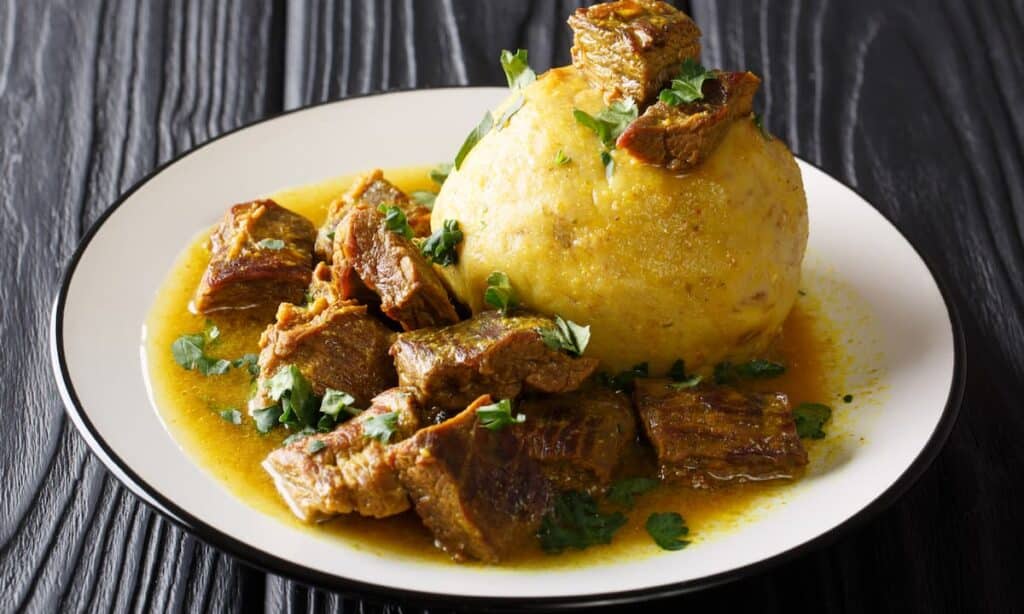
Mofongo is a beloved dish in the Dominican Republic, and for good reason. This hearty and flavorful meal is made with mashed plantains, garlic, and other savory ingredients, and is often served alongside meat, seafood, or vegetables. Whether you’re a fan of Latin American cuisine or simply looking to try something new, Mofongo is a must-try dish.
Originating in Puerto Rico, Mofongo has become a popular dish throughout the Caribbean, including the Dominican Republic. It is typically made by mashing fried plantains with garlic, olive oil, and pork cracklings (known as chicharrones) in a wooden mortar and pestle called a pilón. Some variations may also include other ingredients like bacon, cheese, or herbs.
Mofongo is often served in a bowl or on a plate, with a filling of your choice. Common fillings include shrimp, chicken, beef, or vegetables like mushrooms or peppers. The dish is hearty and satisfying, making it a popular choice for lunch or dinner.
If you’re visiting the Dominican Republic, there are many restaurants and food stands where you can try Mofongo. It’s often served in casual settings, so don’t be afraid to venture off the beaten path and explore local eateries. You can also find pre-made Mofongo mixes in supermarkets, which you can use to make the dish at home.
Mofongo is a true icon of Dominican cuisine, and one that you won’t want to miss. Give it a try and discover the delicious flavors of the Dominican Republic.
6- Discovering Pastel en Hoja: A Delicious Dominican Dish
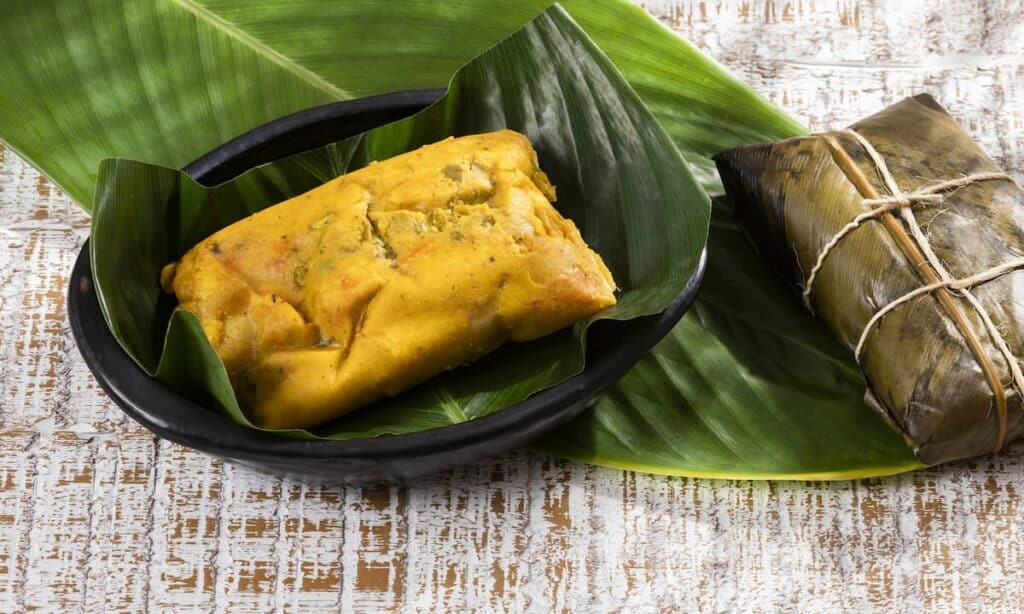
If you’re a food lover and enjoy discovering new cuisines, then you must try Pastel en Hoja, a traditional Dominican dish that has been enjoyed for generations. This delicious dish consists of seasoned meat (usually pork or chicken) that is wrapped in plantain leaves and baked to perfection.
The result is a flavorful, juicy meat that is infused with the subtle taste of the plantain leaves. The dish is often served with rice and beans or salad, and it is a staple at Dominican celebrations and gatherings.
Pastel en Hoja is not only a delicious dish but also a symbol of the Dominican culture and its rich culinary history. The dish originated in the rural areas of the country, where it was a popular meal among farmworkers and their families.
Over time, it has become a beloved dish throughout the Dominican Republic and beyond, with many restaurants and food trucks featuring their own unique versions of the dish.
Making Pastel en Hoja is an art form that requires patience and skill. The meat is marinated in a mixture of herbs and spices, including garlic, oregano, and pepper, to enhance its flavor. Then, it is wrapped in plantain leaves that have been softened over a flame and tied together with twine.
The wrapped meat is then boiled or baked until it is cooked through and tender. The result is a delicious and aromatic dish that is sure to delight your taste buds.
If you want to try making Pastel en Hoja at home, there are many recipes available online that you can follow. You can also find the dish at many Dominican restaurants or food trucks, especially during traditional celebrations such as Christmas and Easter.
In conclusion, Pastel en Hoja is a mouth-watering Dominican dish that is worth trying if you are a fan of Caribbean cuisine. Its unique blend of flavors and textures will transport you to the heart of the Dominican Republic and its vibrant culinary culture.
7- A Taste of Sweet Tradition: Habichuelas con Dulce from the Dominican Republic
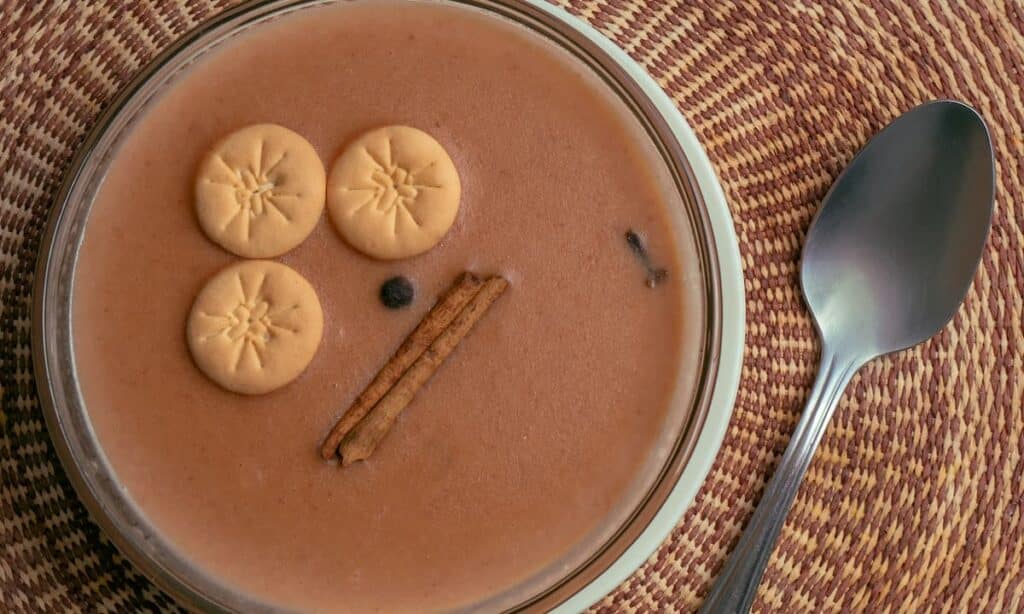
Habichuelas con Dulce, or Sweet Cream of Beans, is a traditional dessert from the Dominican Republic that is typically served during the Lenten season and Easter celebrations. This creamy and sweet delicacy is made from red kidney beans, coconut milk, evaporated milk, condensed milk, cinnamon, and other flavorful spices. It is a dessert that has been passed down from generation to generation and holds a special place in Dominican cuisine.
History and Origin
Habichuelas con Dulce has a rich history that dates back to the pre-Columbian era when the Taínos, the indigenous people of the Dominican Republic, used beans in their cooking. Over time, the dish was adapted and transformed into a sweet and creamy dessert, becoming a staple of Dominican cuisine. Today, Habichuelas con Dulce is commonly served during the Lenten season and Easter, as well as at other special occasions such as birthdays and family gatherings.
Ingredients and Preparation
The main ingredient in Habichuelas con Dulce is red kidney beans. The beans are cooked until tender and then blended with coconut milk, evaporated milk, and condensed milk to create a smooth and creamy base. Cinnamon sticks, cloves, and other spices are added for flavor, and the mixture is simmered for about an hour until it thickens. Some recipes call for additional ingredients such as raisins, sweet potatoes, and pumpkin to add extra texture and sweetness to the dish.
The final result is a sweet, creamy, and aromatic dessert that is often served with a side of crackers or toasted bread. It is a perfect treat to enjoy with family and friends, and many Dominicans look forward to this dessert during the Lenten season.
Making Habichuelas con Dulce at Home
If you want to experience the sweet and creamy flavors of Habichuelas con Dulce, you can easily make it at home with a few simple ingredients. Here is a simple recipe to get you started:
Ingredients:
- 2 cups of red kidney beans
- 2 cups of coconut milk
- 1 can of evaporated milk
- 1 can of condensed milk
- 2 cinnamon sticks
- 1 tablespoon of vanilla extract
- 1/4 teaspoon of salt
- 1/2 teaspoon of ground cinnamon
- 1/4 teaspoon of ground cloves
Instructions:
- Rinse and soak the red kidney beans overnight.
- Drain and rinse the beans and place them in a pot with enough water to cover them. Bring to a boil and then reduce the heat to low and simmer for about 1-2 hours or until the beans are tender.
- Remove the cinnamon sticks and blend the beans with coconut milk, evaporated milk, and condensed milk until smooth.
- Return the mixture to the pot and add cinnamon sticks, vanilla extract, salt, ground cinnamon, and ground cloves.
- Cook on medium heat, stirring occasionally, until the mixture thickens and becomes creamy (about 45-60 minutes).
- Serve hot or cold, with crackers or toasted bread.
In conclusion, Habichuelas con Dulce is a sweet and delicious dessert that is an integral part of Dominican cuisine. Its rich history and unique flavor make it a must-try dish for anyone interested in exploring the traditional foods of the Dominican Republic. Whether you enjoy it during the Lenten season or at other special occasions, this sweet cream of beans is sure to delight your taste buds and leave you
Electronic ticket for entry and exit to the Dominican Republic 2024 Now you can record your entry and exit data digitally It …
Exploring Paradise: The Top 5 Saona Island Excursions You Must Experience Saona Island, nestled in the heart of the Caribbean, is a …





